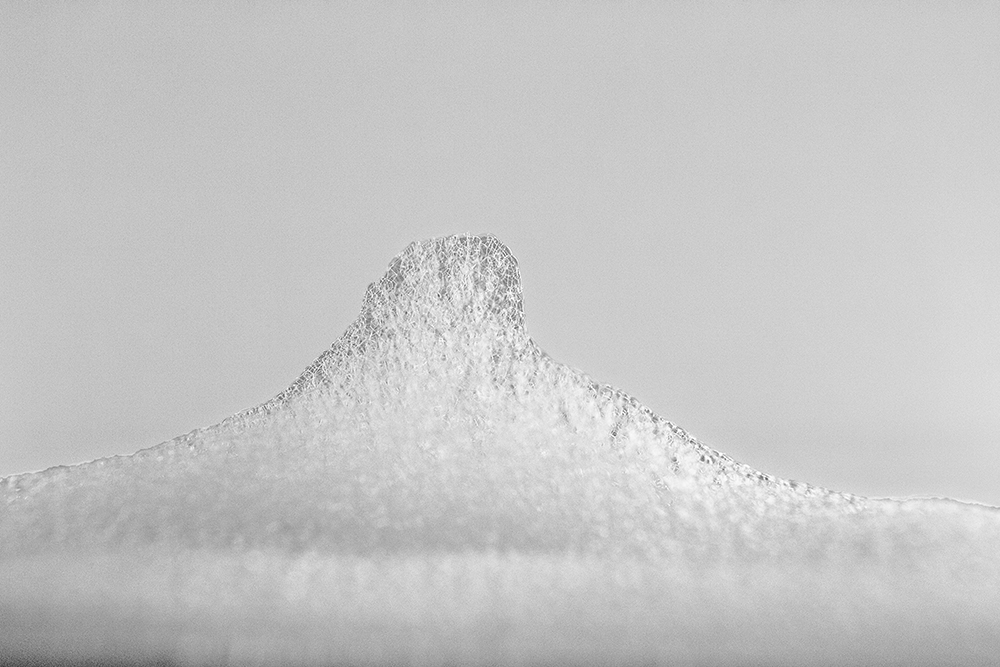Where we met?
(2017)月亮作为最古老的计时工具,在伴随着人类漫长的种族记忆中,它逐渐构成了一种复杂的内在体验。在同一种经验的无数过程的凝缩中,我们透过月亮去理解了永恒的运动,以及时间凝固的形态。而循环往复的月亮,正是海德格尔所形容的那种保持着黑暗的光明,而非单纯的一片光明。
正如月亮作为一个永远奇异的他者,是永不能触及却又对此心怀期望的承载物。在那里,我们只能够透过间接的某种反射显像中与之交会,那些我们所共同经验的东西从来不是由物体本身构成,而是我们眼中的事物。某种意义上,月亮通过一种燃烧着的非在场和显眼的缺失而成为可被感知的心理实体。因此,经验成为裂缝——一场缺席,而生命不再从现实的层面上被给出,也不再作用于那明确地表达真实事物的语言而加以呈现。
这一次,陈萧伊通过对月亮原型意象的探索,在展览中用影像的方式放置了一枚永恒处于运动中的月亮,通过在升落过程中的光线变化与反光材料的共同作用,旨在探索一种无限分离,聚合,以及矛盾事物中的偶然共存,以激活“非因果关系的有序状态”,企图在瞬间化的变量里达成一次同时性的共振。
正如月亮作为一个永远奇异的他者,是永不能触及却又对此心怀期望的承载物。在那里,我们只能够透过间接的某种反射显像中与之交会,那些我们所共同经验的东西从来不是由物体本身构成,而是我们眼中的事物。某种意义上,月亮通过一种燃烧着的非在场和显眼的缺失而成为可被感知的心理实体。因此,经验成为裂缝——一场缺席,而生命不再从现实的层面上被给出,也不再作用于那明确地表达真实事物的语言而加以呈现。
这一次,陈萧伊通过对月亮原型意象的探索,在展览中用影像的方式放置了一枚永恒处于运动中的月亮,通过在升落过程中的光线变化与反光材料的共同作用,旨在探索一种无限分离,聚合,以及矛盾事物中的偶然共存,以激活“非因果关系的有序状态”,企图在瞬间化的变量里达成一次同时性的共振。
As the oldest
measure of time, the moon has come to compose a complex global inner experience
by withholding the long ethnic memory of humans. Within the condesation
of the innumerable amount of experiences projected upon our closest celestial
body, we perceive the concept of eternal motion through the moon alongside an
opposite temporal solidification. The moon's cycle reflects what Heidegger
describes as a preservation of the light of darkness, rather than simple
brightness.
The moon much like an image of eternal strangeness and fascination, bears the allure of wanting to be touched, yet we soon realize that such a feat is impossible. We can only meet the moon through indirect reflections of it, much like all memories that are never formed by the objects themselves but by the reflection and construction of our own eyes. In a sense, the moon becomes a perceivable psychological entity through a luminous absent. Therefore, experience becomes a fissure——somewhat of an absence, where life is no longer experienced from a layer of reality, nor is presented as the language that explicitly describes a tangible object.
In this exhibition, Chen Xiaoyi explores the archetypal images of the moon through a large scale video installation where her subject matter is showcased in eternal motion. The process of light projected is purposely placed in dialogue with large scale reflective surfaces, created to explore the concepts of infinite separation, aggregation, and the occasional coexistence of contradictions. The installation as a whole activates an “orderly state of non-causal relationships” in an attempt to achieve synchronicity within an instantaneous variable.
The moon much like an image of eternal strangeness and fascination, bears the allure of wanting to be touched, yet we soon realize that such a feat is impossible. We can only meet the moon through indirect reflections of it, much like all memories that are never formed by the objects themselves but by the reflection and construction of our own eyes. In a sense, the moon becomes a perceivable psychological entity through a luminous absent. Therefore, experience becomes a fissure——somewhat of an absence, where life is no longer experienced from a layer of reality, nor is presented as the language that explicitly describes a tangible object.
In this exhibition, Chen Xiaoyi explores the archetypal images of the moon through a large scale video installation where her subject matter is showcased in eternal motion. The process of light projected is purposely placed in dialogue with large scale reflective surfaces, created to explore the concepts of infinite separation, aggregation, and the occasional coexistence of contradictions. The installation as a whole activates an “orderly state of non-causal relationships” in an attempt to achieve synchronicity within an instantaneous variable.




